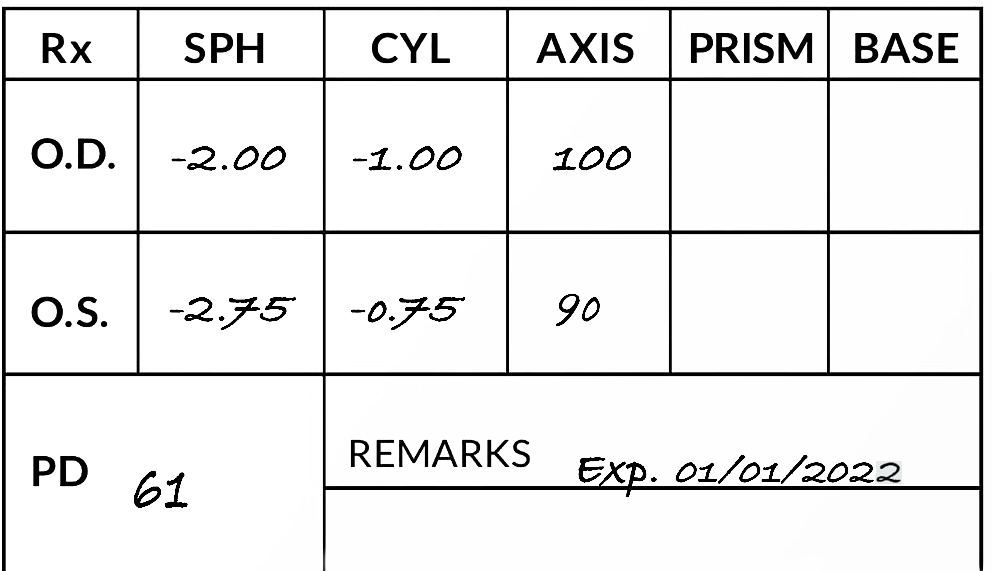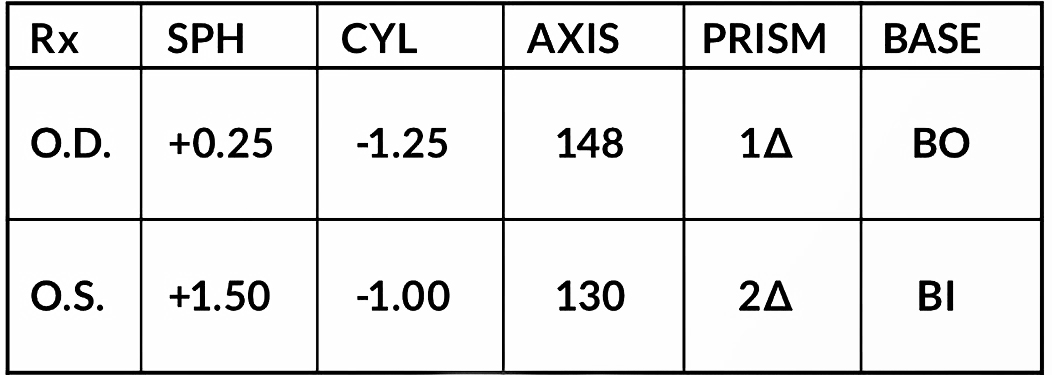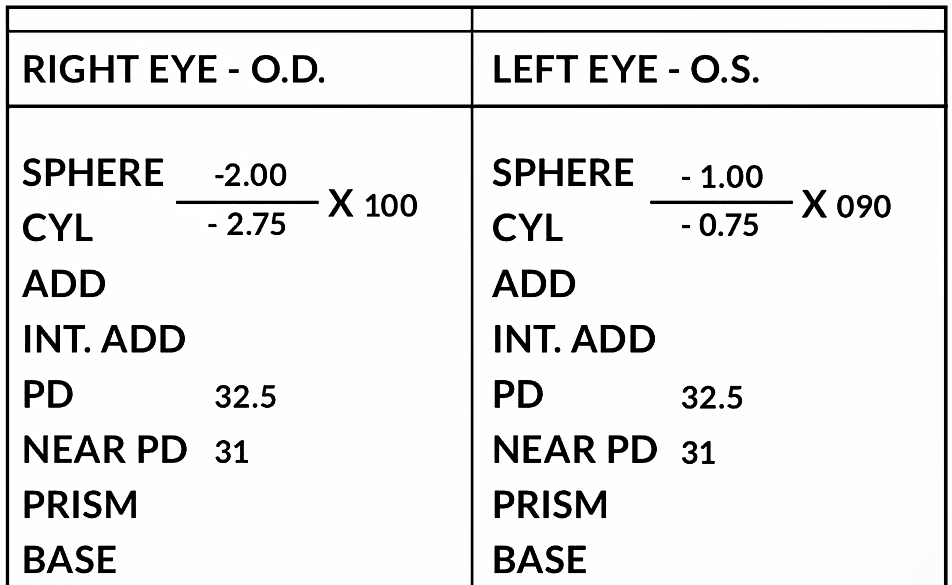How to Read Your Prescription?
If you can’t make sense of your eyeglass prescription, you’re not alone. Here are some common prescription types to help you navigate yours.
Standard Grid Format

This is the most common format with clearly printed fields for OD, OS, SPH, CYL, etc.; values are usually entered with computer, but may be handwritten by doctor.
Rx Notes: Sphere (SPH) and Cylinder (CYL) always have a (+) or (-) sign.
On any prescription, PD can be written in different ways: e.g., 62 (Single PD), 33/31 (Dual PD), or 62/60 (Distance PD/Near PD).
Blank Format

The information on this free-form prescription is usually handwritten.
Progressive / Bifocal

For multi-focal glasses, as well as reading and computer glasses, your Rx will include an ADD or NV value. This number always has a (+) sign.
Rx Note: The type of Rx glasses may be noted on a prescription, such as DV [Distance Vision/nearsightedness] and NV [Near Vision/reading].
Prescription with Prism

The less common prism Rx refers to the amount of prismatic power needed to compensate for eye alignment issues (e.g., double vision or “lazy eye”). The prism Rx will have two values: PRISM & BASE.
Rx Note: BO=Base Out, BI=Base In, BU=Base Up, and BD (or BDn)=Base Down.
Vertical Prescription

Unlike typical Rx formats, with values going from left to right, the vertical Rx values are listed top to bottom. This format is less common in the US.
OD=the right eye OS=the left eye OU=each eye
RX=prescription
SPH(Sphere/Spherical): This indicates the amount of lens power needed to correct nearsightedness or farsightedness. If the number has a plus sign (+) or is not preceded by a plus sign or a minus sign, you are farsighted. The larger the number following the +/-, the stronger the prescription.
CYL(Cylinder/Cylindrical): This indicates the amount of lens power needed to correct astigmatism. This number also can also be preceded by "+" or "-" sign. If "DS" or "SPH" or "spherical" or "PL" is stated at the place of CYL, it means you have no astigmatism.
Axis: This number indicates the orientation of astigmatism and is measured in degrees. It will be between 1 and 180. If an eyeglass prescription includes cylinder power , it must also include an axis value, which follows the cylinder power.
Add: Short for Reading Addition, is the additional correction required for reading. It can be used to make either reading glasses, bifocal glasses or multifocal glasses.
PD: Pupillary Distance, stands for Pupillary Distance, which is the distance between your pupils in millimeters, Your PD is very important for accurately fitting your lenses to achieve vision acuity.
Prism: refers to the prismatic power used to correct vision displacement. It helps to correct some special conditions or eye disorders (like a squint) that require the focused image to move position. The measurement is Prism Dioptre. The value may be as high as 10 and may go up in steps of ½ or 1 Prism Dioptre's.
PL: Plano. Latin for "flat." If this is in the SPH section of an Rx, it means no nearsighted or farsighted correction is needed.